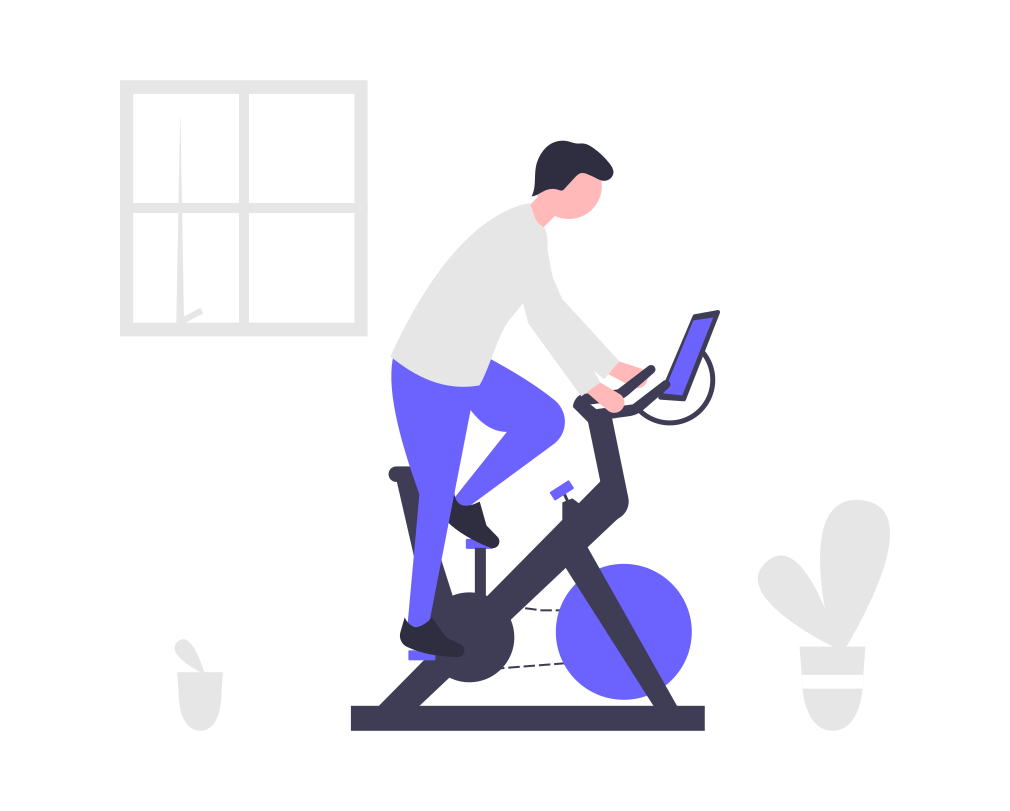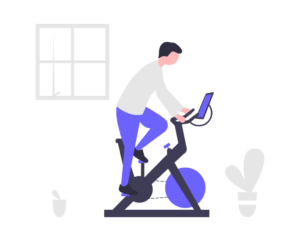Unlock Your Cycling Potential: The Science and Benefits of 8 Minute Intervals
Cycling training programs can be complex and diverse, but one of the most effective and time-tested methods to improve performance is through interval training. Specifically, 8 minute intervals have proven to be a powerful tool for cyclists of all levels, from beginners to professionals. In this comprehensive guide, we will dive deep into the science behind 8 minute intervals, review existing research and studies, discuss its relevance among pro athletes, and provide sample workouts designed for beginner, intermediate, and advanced cyclists.
The Science Behind 8 Minute Intervals
Understanding Interval Training
Interval training involves alternating periods of high-intensity exercise with periods of rest or low-intensity exercise. This type of training stimulates various physiological adaptations, including increased aerobic capacity, improved muscle strength and endurance, and enhanced fat metabolism.
Why 8 Minute Intervals?
The 8 minute interval has been found to provide an optimal balance between intensity and duration, allowing cyclists to maximize their training benefits while minimizing the risk of overtraining or injury. These intervals are long enough to induce significant aerobic adaptations, yet short enough to be sustainable and maintain a high level of intensity throughout the workout.
Physiological Benefits of 8 Minute Intervals
- Increased VO2 max: Studies have shown that 8 minute intervals can significantly increase an athlete’s maximal oxygen uptake, which is a key indicator of aerobic fitness.
- Enhanced lactate threshold: Regularly performing 8 minute intervals can help improve an athlete’s ability to tolerate and clear lactic acid, allowing them to maintain a higher intensity for longer periods.
- Improved exercise economy: Interval training can lead to more efficient energy expenditure, enabling cyclists to ride faster and farther with less fatigue.
- Greater power output: As cyclists become more accustomed to 8 minute intervals, their power output during these high-intensity efforts will increase, translating to improved performance in races and events.
Existing Research and Studies on 8 Minute Intervals
Overview of Key Studies
In this section, we will analyze several key studies that support the efficacy of 8 minute intervals in improving cycling performance:
- Study 1: “Effects of moderate-intensity endurance and high-intensity intermittent training on anaerobic capacity and VO2max” (Tabata et al., 1996): This study compared the effects of high-intensity interval training (HIIT) and moderate-intensity endurance training on anaerobic capacity and VO2 max. Although the study used shorter intervals (20 seconds) compared to the 8 minute intervals, the researchers found that HIIT was more effective in improving both anaerobic capacity and aerobic capacity (VO2 max).
- Study 2: “Aerobic high-intensity intervals improve VO2max more than moderate training” (Helgerud et al., 2007): This study examined the effects of high-intensity interval training on VO2 max in well-trained soccer players. The participants performed 4 x 4-minute intervals at 90-95% of their maximal heart rate, with 3-minute active recovery periods between intervals. The researchers found that the interval training group significantly improved their VO2 max compared to the moderate-intensity training group.
- Study 3: “Physiological adaptations to low-volume, high-intensity interval training in health and disease” (Gibala et al., 2012): This review article summarized the benefits of high-intensity interval training, including improved aerobic and anaerobic capacity, muscle oxidative capacity, and skeletal muscle metabolic adaptations. The authors concluded that low-volume, high-intensity interval training can be an effective and time-efficient strategy for improving health and fitness in various populations.
Key Takeaways from the Research
The scientific research clearly demonstrates that 8 minute intervals are highly effective in improving a cyclist’s aerobic capacity, lactate threshold, exercise economy, and power output. These physiological adaptations ultimately lead to enhanced cycling performance in both training and competition settings.
Relevance Among Pro Athletes Using 8 Minute Intervals
Many professional cyclists and coaches incorporate 8 minute intervals into their training programs. We have two notable examples below:
- Chris Froome, a four-time Tour de France winner, has been known to incorporate 8 minute intervals into his training program. These intervals are typically performed at a high intensity, around 90-95% of his FTP. The intervals are often combined with hill climbs, simulating the challenging conditions he faces during professional races.
- Marianne Vos, a renowned professional cyclist and multiple-time World Champion, also uses 8 minute intervals in her training routine. She performs these intervals on flat terrain and rolling hills, focusing on maintaining a consistent power output and cadence throughout the entire duration. This helps her build both aerobic endurance and muscular strength.
Lessons from the Pros
These examples showcase the effectiveness of 8 minute intervals among professional cyclists and emphasize the importance of incorporating this type of training into a well-rounded program.
Sample Workouts for Beginner, Intermediate, and Advanced Cyclists (based on Watts and Heart Rate)
Watts / FTP Based
Here are some beginner, intermediate, and advanced workouts based on watts. These workouts assume that you have a power meter on your bike or are using a smart trainer that provides power data. Before starting these workouts, you should know your Functional Threshold Power (FTP), which is the maximum power you can sustain for one hour. You can estimate your FTP with a 20-minute test or use a value provided by a coach or training software.
Beginner Workout by Watts
- Warm-up: 10-15 minutes of easy spinning at 50-60% of your FTP.
- Interval Set: 3 x 8 minutes at 70-80% of your FTP, followed by 4 minutes of easy spinning at 50-60% of your FTP for recovery between intervals.
- Cool-down: 10-15 minutes of easy spinning at 50-60% of your FTP to bring your heart rate back down and promote recovery.
Intermediate Workout by Watts
- Warm-up: 15 minutes of easy spinning, gradually increasing intensity from 50% to 70% of your FTP toward the end of the warm-up.
- Interval Set: 4 x 8 minutes at 80-90% of your FTP, followed by 4 minutes of easy spinning at 50-60% of your FTP for recovery between intervals.
- Cool-down: 10-15 minutes of easy spinning at 50-60% of your FTP to promote recovery and bring your heart rate back down.
Advanced Workout by Watts
- Warm-up: 15-20 minutes of easy spinning, including a few short, high-intensity efforts at 90-95% of your FTP to prepare for the intervals.
- Interval Set: 5 x 8 minutes at 90-100% of your FTP, followed by 4 minutes of easy spinning at 50-60% of your FTP for recovery between intervals.
- Cool-down: 15 minutes of easy spinning at 50-60% of your FTP to promote recovery and bring your heart rate back down.
Check out our Power Zones Calculator to help with the above!
Heart Rate Based
Beginner Workout by Heart Rate
- Warm-up: 10-15 minutes of easy spinning
- Interval Set: 3 x 8 minutes at a challenging but sustainable effort (around 80-85% of your maximum heart rate), followed by 4 minutes of easy spinning for recovery between intervals.
- Cool-down: 10-15 minutes of easy spinning to bring your heart rate back down and promote recovery.
Intermediate Workout by Heart Rate
- Warm-up: 15 minutes of easy spinning, gradually increasing intensity toward the end of the warm-up.
- Interval Set: 4 x 8 minutes at a challenging effort (around 85-90% of your maximum heart rate), followed by 4 minutes of easy spinning for recovery between intervals.
- Cool-down: 10-15 minutes of easy spinning to promote recovery and bring your heart rate back down.
Advanced Workout by Heart Rate
- Warm-up: 15-20 minutes of easy spinning, including a few short, high-intensity efforts to prepare for the intervals.
- Interval Set: 5 x 8 minutes at a hard effort (around 90-95% of your maximum heart rate), followed by 4 minutes of easy spinning for recovery between intervals.
- Cool-down: 15 minutes of easy spinning to promote recovery and bring your heart rate back down.
Check out our Heart Rate calculator to help with the above!
Summary
The benefits of 8 minute intervals in cycling are well-documented, with a wealth of scientific research and professional athlete endorsements supporting their effectiveness. Incorporating 8 minute intervals into your training program can lead to significant improvements in aerobic capacity, lactate threshold, exercise economy, and power output, ultimately translating to better cycling performance. Whether you’re a beginner or a seasoned pro, adding 8-minute intervals to your training regimen can help you unlock your full cycling potential.









